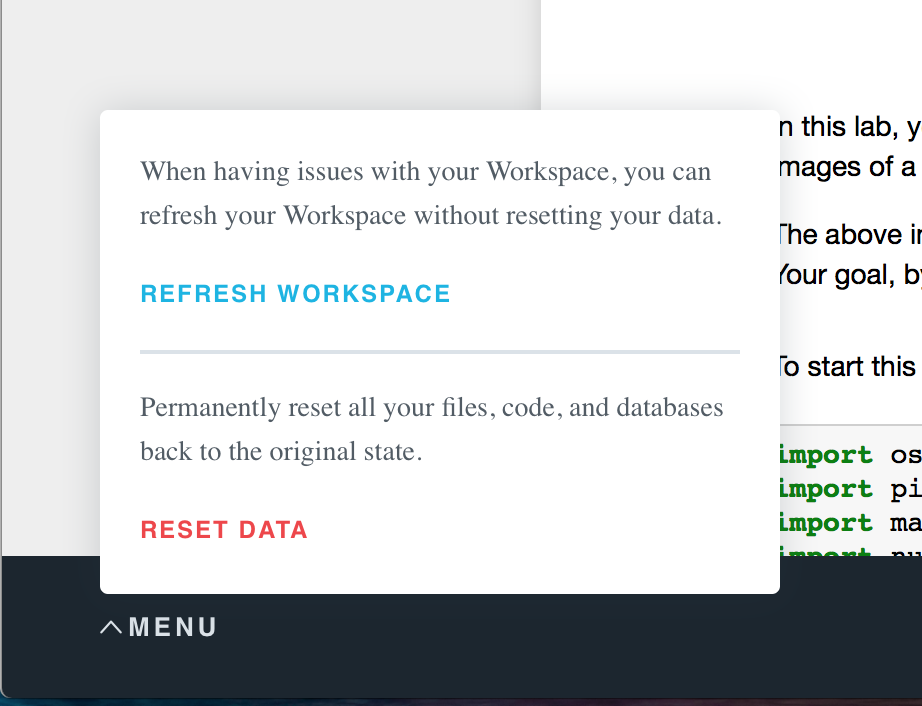28. Understanding Jupyter Workspaces
Welcome to your guide on understanding Udacity's new and cutting edge workspaces! Here we will give you a run down on how to properly use workspaces, specifically the Jupyter workspaces. Let's get started!
What is a workspace?
A workspace is a an interactive section that let students write and test code, access a database, run Jupyter Notebooks, and more! This allows us to bring more advanced technologies to the classroom and make your online experience a more rewarding one.
What is a Jupyter workspace?
A Jupyter workspace is a specific type of workspace that allows a Jupyter Notebook be ran in the classroom. It will act and behave like if you were running it on your own computer.
How to use the Jupyter workspace?
Upon entering a concept in which uses a Jupyter workspace you will be either loaded to a Jupyter director browser or a particular Jupyter notebook. When using the notebook, each block is called a cell and is ran independently from other cells. Click here to find more about Jupyter notebooks shortcuts for an increase of speed and efficiency.
Things to keep in mind.
You are automatically assigned a new Workspace, configured as specified by your instructor upon landing on the concept. That Workspace is unique to the you. All files you work on in the Workspace are automatically backed up for you.
If you navigate away from the Workspace for more than 30 minutes, your Workspace is torn down. Your files in /home/workspace are preserved and will be restored should you navigate back to this concept.
Once you access a Workspace for the first time, your work files are saved automatically. The next time you come back to the page, your previous changes will be preserved. However, after a half-hour of idle time (tab not accessed, or simply closed, or laptop asleep, etc), we tear down your workspace VM. If you return after this period, your files will be restored to their most recent work, but we do not restore the list of open files, or any shell sessions they may have had running. (We reopen the files that should be open on first viewing… albeit these files may have been since changed by you).
There are two reset options as seen in the photo below. One you use when you are having issues with your Workspace, you then can refresh your Workspace without resetting your data. The other option is to permanently reset all your files, code, and databases back to the original state.
If you are looking to clear the kernel, you can do so by going to Kernel -> Then option of your choice.
